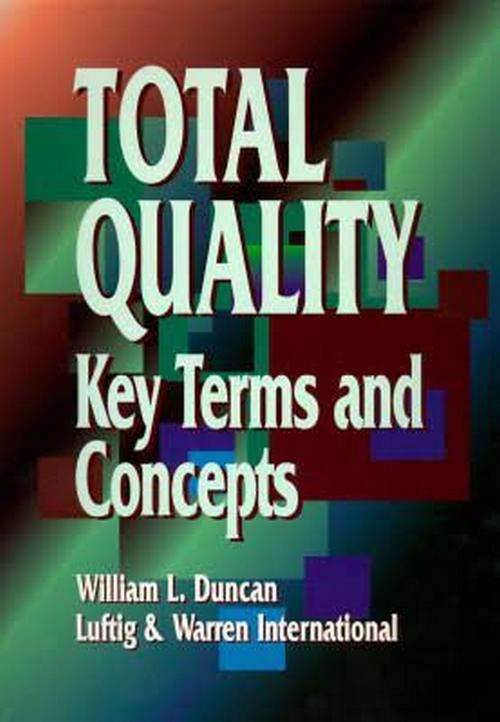
Table of Contents
Introduction iii
ABC – average outgoing quality (AOQ) 1
backflushing – business processes 14
c-chart – cycle time 21
D-chrt – duty cycle 48
economic order quantity (EOQ) – extrapolation planning 60
facilitation – FURSAP measures 69
GAAP – growth rate analysis 80
Hawthorne effect – hypothesis 83
imperfection – isolated peak distribution 86
JIT – just-in-time (JIT) manufacturing 92
kaizen-kutosis 95
latent defects – LSL 97
machine shop- multivariate charts 100
N – np-chart 107
objective – ownership 111
p-chart – push systems 118
QA – quick-change devices 142
R chart – run chart 147
s-chart – synchronous production 155
tactical metrics – tweaking 171
u-chart – USL 178
value – voice of the customer 180
WANs – world-class manufacturing 183
X, R chart – X chart 185
yield – yield 186
Z score – zero defects 187
Introduction
Total quality management (TQM) implementation is a lifelong, companywide commitment. It involves broad, sweeping change across the organization and deep, fundamental process improvement. In most organizations, the very culture of the company is restructured.
This book is a desk reference for TQM practitioners who have undertaken the TQM journey and for anyone interested in quality improvement, a core element for organizational success. The definitions and discussions of key quality terms and concepts help provide a better understanding of the various aspects of the quality field. To help facilitate this learning process, boldface type is used to highlight terms or phrases that are defined within the glossary portion of this book. Because of the fundamental, culture-based nature of TQM-related change, it is important to provide the following elements in a reference book like this one:
1. A general framework for ready reference that outlines the phases of TQM implementation. An overview of the phases of successful TQM implementation is provided in this Introduction, and each phase is detailed in individual listings within the publication’s definitions. The outline should allow practitioners to quickly reference this book for (1) an objective benchmark of the types of activities that should be completed or under way at any point in the TQM implementation process and (2) a general understanding of what lies ahead. This information will also prove invaluable in developing introductory and overview materials about how TQM implementations work and what they involve. (A detailed implementation plan is not included here, since many already exist in popular TQM books, and the specifics of each implementation plan vary greatly from organization to organization, reflecting the needs of the company involved.)
2. A glossary of TQM terminology. Cultures are held together not only by a system of values and beliefs, but also by a common language. The language of TQM is unique, and most of the terminology involved is listed and defined within this text. Related terms are cross-references as appropriate. Glossary entries span the entire spectrum of the quality field-from technical terms such as Poisson distribution to less technical but more frequently used terms such as empowerment. (Note that a term may be more commonly used without necessarily being more commonly understood!)
The Phases of TOM Implementation-An Overview
Phase I: Preparation Phase
Phase I involves an examination of the business-its objectives, problems, and customer needs. During this phase, management decides whether to use TQM or another approach to meet the needs of all of the company’s stakeholders. For more detailed information, see the entry preparation phase (phase I) in the glossary portion of this text.
Phase 11: Planning Phase
The second phase consists of the following steps: (1) securing of commitments; (2) establishment of the business lead team, company steering committee, and process improvement team structures; (3) strategic planning and policy deployment; (4) development of the implementation plan; and (5) awareness training. For more detailed information, see the entry planning phase (phase 11) in the glossary portion of this text.
Phase 111: Assessment Phase
This phase consists of identifying the structure, strengths, and weaknesses of the organization, competition, products and services, work force, and customers. At the conclusion of this phase, there should be a clear understanding of customer needs, how well the organization fulfills those needs, and where the organization’s processes need to be strengthened to improve customer satisfaction and gain market share. For more detailed information, see the entry assessment phase (phase 111) in the glossary portion of this text.
Phase IV: Implementation Phase
Also called the deployment phase, this phase of TQM implementation includes the following steps: (1) alignment of the program with strategic plans, (2) strengthening the program infrastructure, (3) initiating continuous improvement activities, (4) monitoring performance, and (5) communicating lessons learned. At the conclusion of this phase, there should be a strong, ongoing TQM-based continuous improvement process in place with tangible benefits manifested. For more detailed information, see the entry implementation phase (phase IV) in the glossary portion of this text.
Phase V: Networking Phase
In the final phase of TQM implementation, initial TQM successes are exploited, leveraging them to stimulate broader improvements throughout the organization, and reaching out into the supplier community. The organization
( 1) communicates strategic improvement plans with outside organizations,
(2) shares lessons learned with these key organizations, (3) initiates regular visits with suppliers and customers to cement the bonds of understanding and mutual growth, (4) institutionalizes the improvement process throughout the customer/producer/supplier chain, and (5) develops the process into a continuous “loop” that assures sustainability. For more detailed information, see the entry networking phase (phase V) in the glossary portion of this text.
